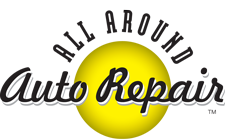If you want your vehicle to run safely and smoothly each season (and for many years to come), it’s necessary to be consistently proactive with its care and maintenance. Instead of waiting for the little graphic indicators on your dashboard to light up (and stay on) alerting you of a current and potentially-costly concern with a particular area of your vehicle, simply routinely schedule maintenance service appointments with your local auto technician. With the latest high-tech equipment and proper tools, here are some of the many services you can expect from your certified auto technician:
Oil Change
Each time you bring your vehicle in for an oil change, your auto technician will let you know when it’s time to come back for the next one. This can be in so many miles and/or by a certain date ~ whichever comes first. To avoid damaging your engine, heed this designated timeline provided by your auto technician. Even if you add oil to your vehicle yourself, you still need to have your car’s oil completely replaced as scheduled.
Tire Inspection & Rotation
When rotating your car’s tires to avoid having one of them wear down faster than the others, your auto technician will also carefully inspect them for potential damage. If there’s a slow leak in one of them, a nail or foreign object puncturing one, or the treads are too low to drive your vehicle safely on wet or snowy roads, your auto technician will be able to inform you of these potential issues and offer solutions.
Filter Inspection & Replacement
Road dirt, dust in the air, and seasonal debris can clog your car’s filter and affect its performance over time. While most car drivers don’t schedule a maintenance service appointment with their local auto technician solely to have their car’s filter inspected, this is a regular item inspected during a service maintenance appointment.

Brake Inspection & Replacement
Even if you keep a safe distance between your vehicle and the one in front of you, maintain each road’s posted speed limit, and never ride your brakes, they still need to be routinely inspected. You can never predict when a deer will leap in front of your vehicle, when something will block the roadway, or a cyclist sharing the road will have trouble controlling his bike; you’ll need fully-functioning brakes to slow down and/or stop completely. If the volume of the music or conversations in your vehicle are always loud and you can’t hear the brakes screeching or scraping, or if your car’s technology doesn’t indicate your brakes need repair, the only way to know your brakes need to be replaced is when they stop working or when your auto technician inspects them.
Belt/Hose Inspection & Replacement
Over time, your car’s rubber belts and hoses will disintegrate. Your auto technician will not only ensure your hoses are firmly in place, but also inspect them for any cracks or fraying.
Battery Inspection & Replacement
Your battery doesn’t have to be completely dead to not be working properly. If it’s not charged fully, not positioned properly under your hood, or has rusty or compromised components, it can affect your car’s performance and safety. Your local auto technician provides a battery inspection service and can replace your battery when needed.
Wiper Blade Inspection & Replacement
Since you don’t typically use your car’s wipers every day, it’s easy to not realize they need to be replace or repaired until you actually need them. It’s impossible to drive safely in a downpour without fully-functioning wipers. During a scheduled service maintenance appointment, your auto technician will inspect your wipers and can replace them if necessary.
Frequently Asked Questions on Vehicle Maintenance Services
1. How often should I get an oil change for my car?
It’s generally recommended to change your car’s oil every 3,000 to 5,000 miles, depending on the type of oil used and your driving habits. Regular oil changes keep your engine running smoothly and prevent costly damage. Check your owner’s manual for specific guidelines and always follow the schedule provided by your auto technician.
2. Why is tire rotation important?
Tire rotation is crucial to ensure even wear on all tires, extending their lifespan and improving your car’s handling. Typically, you should rotate your tires every 6,000 to 8,000 miles. Regular rotations help prevent uneven tread wear, which can lead to reduced traction and increased risk of blowouts.
3. What are the signs that my car’s filters need replacement?
Dirty or clogged filters can reduce your car’s performance and fuel efficiency. Signs that your filters need replacing include decreased engine power, unusual engine sounds, and reduced fuel efficiency. During routine maintenance, your auto technician will check and replace filters as needed to keep your vehicle running smoothly.
4. How often should I have my brakes inspected?
Brake inspections should be part of your regular maintenance routine, ideally every 10,000 to 12,000 miles. Signs that your brakes need attention include squeaking or grinding noises, longer stopping distances, and a spongy brake pedal. Regular inspections help prevent brake failure and ensure your safety on the road.
5. What should I look for in a battery inspection?
During a battery inspection, your auto technician will check for proper charge, secure connections, and signs of corrosion. If your battery is more than three years old, or if you notice slow engine crank or dim headlights, it might be time for a replacement. Regular checks prevent unexpected breakdowns.
6. Why is it important to replace worn wiper blades?
Worn wiper blades can impair visibility during rain or snow, posing a significant safety risk. Replace your wiper blades every six months or as soon as you notice streaking or squeaking. Regular inspections during maintenance visits ensure your wipers are always in top condition.
7. How do I know if my car’s belts and hoses need replacement?
Belts and hoses wear out over time and can cause significant damage if they fail. Signs of wear include cracks, fraying, or leaks. Have your belts and hoses inspected during routine maintenance visits, typically every 30,000 to 50,000 miles, to ensure they are in good condition and avoid breakdowns.
8. What is involved in a routine tire inspection?
A routine tire inspection includes checking the tread depth, looking for any punctures or damage, and ensuring proper tire pressure. Uneven tread wear can indicate alignment issues, and low pressure can lead to poor fuel efficiency and handling. Regular inspections keep your tires safe and extend their life.
9. Why should I follow the maintenance schedule recommended by my auto technician?
Following your auto technician’s maintenance schedule helps prevent breakdowns and costly repairs. Regular service appointments ensure that all components of your vehicle are in good working order, enhancing performance, safety, and longevity. It’s a proactive approach to car care that pays off in the long run.
10. What are the benefits of using high-quality replacement parts?
Using high-quality replacement parts ensures compatibility and reliability, maintaining your car’s performance and safety. OEM (Original Equipment Manufacturer) parts are specifically designed for your vehicle, providing the best fit and function. While they may cost more upfront, they often last longer and perform better than cheaper alternatives.


